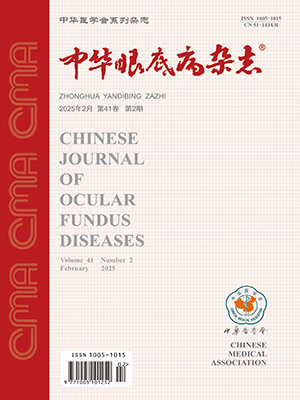| 1. |
Wynford-Thomas R, Jacob A, Tomassini V. Neurologicalupdate: MOG antibody disease[J]. J Neurol, 2019, 266(5): 1280-1286. DOI: 10.1007/s00415-018-9122-2.
|
| 2. |
de Mol CL, Wong Y, van Pelt ED, et al. The clinical spectrum and incidence of anti-MOG associated acquired demyelinating syndromes in children and adults[J]. Mult Scler, 2019, 26(7): 806-814. DOI: 10.1177/1352458519845112.
|
| 3. |
Senanayake B, Jitprapaikulsan J, Aravinthan M, et al. Seroprevalence and clinical phenotype of MOG-IgG-associated disorders in Sri Lanka[J]. J Neurol Neurosurg Psychiatry, 2019, 90(12): 1381-1383. DOI: 10.1136/jnnp-2018-320243.
|
| 4. |
Filippatou AG, Mukharesh L, Saidha S, et al. AQP4-IgG and MOG-IgG related optic neuritis-prevalence, optical coherence tomography findings and visual outcomes: a systematic review and meta-analytics[J/OL]. Front Neurol, 2020, 11: 540156[2020-10-08]. https://pubmed.ncbi.nlm.nih.gov/33132999/. DOI: 10.3389/fneur.2020.540156.
|
| 5. |
Biotti D, Bonneville F, Tournaire E, et al. Optic neuritis in patients with anti-MOG antibodies spectrum disorder: MRI and clinical features from a large multicentric cohort in France[J]. J Neurol, 2017, 264(10): 2173-2175. DOI: 10.1007/s00415-017-8615-8.
|
| 6. |
Jarius S, Ruprecht K, Kleiter I, et al. MOG-IgG in NMO and related disorders: a multicenter study of 50 patients. Part 2: epidemiology, clinical presentation, radiological and laboratory features, treatment responses, and long-term outcome[J]. J Neuroinflammation, 2016, 13(1): 280. DOI: 10.1186/s12974-016-0718-0.
|
| 7. |
Akaishi T, Himori N, Takeshita T, et al. Five-year visual outcomes after optic neuritis in anti-MOG antibody-associated disease[J/OL]. Mult Scler Relat Disord, 2021, 56: 103222[2021-08-24]. https://pubmed.ncbi.nlm.nih.gov/34461572/. DOI: 10.1016/j.msard.2021.103222.
|
| 8. |
Weber MS, Derfuss T, Metz I, et al. Defining distinct features of anti-MOG antibody associated central nervous system demyelination[J/OL]. Ther Adv Neurol Disord, 2018, 11: 1756286418762083[2018-03-29]. https://pubmed.ncbi.nlm.nih.gov/29623106/. DOI: 10.1177/1756286418762083.
|
| 9. |
中国免疫学会神经免疫分会. 抗髓鞘少突胶质细胞糖蛋白免疫球蛋白G抗体相关疾病诊断和治疗中国专家共识[J]. 中国神经免疫学和神经病学杂志, 2020, 27(2): 68-95. DOI: 10.3969/j.issn.1006-2963.2020.02.002.Neuroimmunology Branch of Chinese Society for Immunology. Chinese expert consensus on diagnosis and treatment of anti-myelin oligodendrocyte glycoprotein immunoglobulin G antibody-associated diseases[J]. Chin J Neuroimmunol & Neurol, 2020, 27(2): 68-95. DOI: 10.3969/j.issn.1006-2963.2020.02.002.
|
| 10. |
Ramanathan S, Mohammad S, Tantsis E, et al. Clinical course, therapeutic responses and outcomes in relapsing MOG antibody-associated demyelination[J]. J Neurol Neurosurg Psychiatry, 2017, 89(2): 127-137. DOI: 10.1136/jnnp-2017-316880.
|
| 11. |
董会卿. MOG抗体介导的特发性炎性脱髓鞘疾病[J]. 中国神经免疫学和神经病学杂志, 2017, 24(2): 88-91. DOI: 10.3969/j.issn.1006-2963.2017.02.004.Dong HQ. MOG antibody-mediated idiopathic inflammatory demyelinating disease[J]. Chin J Neuroimmunol & Neurol, 2017, 24(2): 88-91. DOI: 10.3969/j.issn.1006-2963.2017.02.004.
|
| 12. |
Chen JJ, Flanagan EP, Jitprapaikulsan J, et al. Myelin oligodendrocyte glycoprotein antibody-positive optic neuritis: clinical characteristics, radiologic clues, and outcome[J]. Am J Ophthalmol, 2018, 195: 8-15. DOI: 10.1016/j.ajo.2018.07.020.
|
| 13. |
Cellina M, Fetoni V, Ciocca M, et al. Anti-myelin oligodendrocyte glycoprotein antibodies: magnetic resonance imaging findings in a case series and a literature review[J]. Neuroradiol J, 2018, 31(1): 69-82. DOI: 10.1177/1971400917698856.
|
| 14. |
Feng C, Chen Q, Zhao G, etal. Clinical characteristics of optic neuritis phenotypes in a 3-year follow-up Chinese cohort[J/OL]. Sci Rep, 2021, 11(1): 14603[2021-07-16]. https://pubmed.ncbi.nlm.nih.gov/34272440/. DOI: 10.1038/s41598-021-93976-1.
|
| 15. |
Epstein SE, Levin S, Onomichi K, et al. Myelin oligodendrocyte glycoprotein (MOG) antibody-mediated disease: the difficulty of predicting relapses[J/OL]. Mult Scler Relat Disord, 2021, 56: 103229[2021-08-28]. https://pubmed.ncbi.nlm.nih.gov/34479112/. DOI: 10.1016/j.msard.2021.103229.
|
| 16. |
Denève M, Biotti D, Patsoura S, et al. MRI features of demyelinating disease associated with anti-MOG antibodies in adults[J]. J Neuroradiol, 2019, 46(5): 312-318. DOI: 10.1016/j.neurad.2019.06.001.
|
| 17. |
Yang M, Wu YQ, Song HL, et al. Vision prognosis and associated factors of optic neuritis in dependence of glial autoimmune antibodies[J]. Am J Ophthalmol, 2022, 239: 11-25. DOI: 10.1016/j.ajo.2022.01.015.
|
| 18. |
Havla J, Kumpfel T, Schinner R, et al. Myelin-oligodendrocyte-glycoprotein (MOG) autoantibodies as potential markers of severe optic neuritis and subclinical retinal axonal degeneration[J]. J Neurol, 2017, 264(1): 139-151. DOI: 10.1007/s00415-016-8333-7.
|
| 19. |
周欢粉, 魏世辉. 神经生长因子对脱髓鞘性视神经炎小鼠视网膜神经组织保护作用的实验研究[J]. 中华眼视光学与视觉科学杂志, 2010, 12(5): 329-334. DOI: 10.3760/cma.j.issn.1674-845X.2010.05.003.Zhou HF, Wei SH. Protective effects of nerve growth factor against retinal ganglion cell damage in demyelinated optic neuritis in mice[J]. Chin J Optom Ophthalmol Vis Sci, 2010, 12(5): 329-334. DOI: 10.3760/cma.j.issn.1674-845X.2010.05.003.
|
| 20. |
严钰洁, 张利, 王志军, 等. 视神经炎黄斑区神经节细胞复合体及视盘周围神经纤维层损伤演变过程的临床观察[J]. 中华眼科杂志, 2018, 54(1): 62-68. DOI: 10.3760/cma.j.issn.0412-4081.2018.01.011.Yan YJ, Zhang L, Wang ZJ, et al. Clinical observation on the evolution process of macular ganglion cell complex and peripapillary retinal nerve fiber layer of neuritis patients[J]. Chin J Ophthalmol, 2018, 54(1): 62-68. DOI: 10.3760/cma.j.issn.0412-4081.2018.01.011.
|
| 21. |
Stiebel-Kalish H, Hellmann MA, Mimouni M, et al. Does time equal vision in the acute treatment of a cohort of AQP4 and MOG optic neuritis?[J/OL]. Neurol Neuroimmunol Neuroinflamm, 2019, 6(4): e572[2019-05-21]. https://pubmed.ncbi.nlm.nih.gov/31355308/. DOI: 10.1212/NXI.0000000000000572.
|
| 22. |
Chen JJ, Flanagan EP, Bhatti MT, et al. Details and outcomes of a large cohort of MOG-IgG associated optic neuritis[J/OL]. Mult Scler Relat Disord, 2022, 68: 104237[2022-10-10]. https://pubmed.ncbi.nlm.nih.gov/36252317/. DOI: 10.1016/j.msard.2022.104237.
|




